Smoke Detector vs. Fire Alarm: Pros, Cons, Types, & Differences
-
Pete Ortiz
- Last updated:
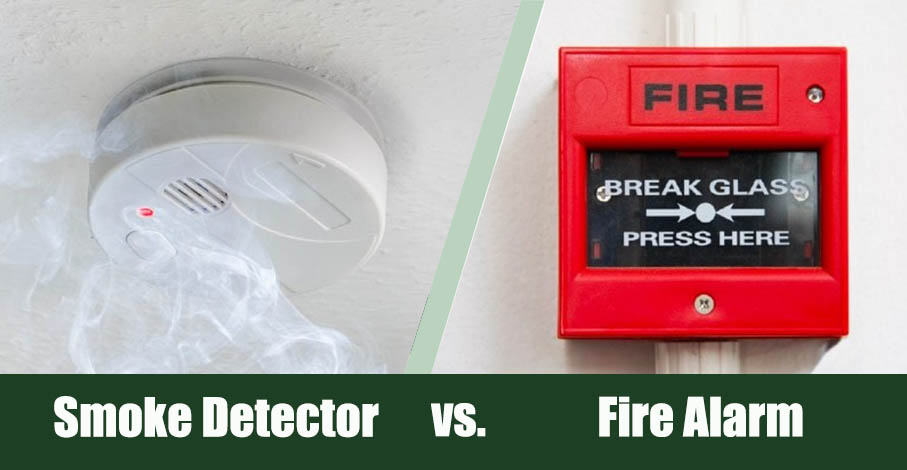
When it comes to fire safety, you need to know two primary safety devices: smoke detectors and fire alarms. Both devices may appear similar, but there are several differences. Understanding them is the first step to deploying the right device for the right purpose.
Both the fire alarm and smoke detector are crucial fire safety devices. They can alert you as soon as a fire breaks out. Without either one, your home could be destroyed. Not only that, but many lives may be lost if there is no early warning system.
Before shopping for these fire safety products, it helps to understand the difference between a smoke detector and a fire alarm. In this article, we’ll focus on several aspects of these two handy devices. So, you’ll know how they differ, what they do, and which one you’ll want to choose if you need one.
Overview of Smoke Detector
A smoke detector is a small device that contains a sensor to detect smoke particles in the air. They can either be battery-powered or hardwired. You can mount these devices on the ceiling or high on a wall. For battery-powered smoke detectors, you must replace the batteries after some time. But some smoke detectors have a 10-year sealed battery.
A smoke detector is ideal for smaller homes and residential apartments. They are required by law in most states. So, you may want to check with your local fire department to ensure you’re following the local codes. Understanding how a smoke detector works is crucial before you decide to buy one.

How Does a Smoke Detector Work?
Smoke detectors detect smoke by sensing the presence of small particles in the air. A typical smoke detector has a sensor to detect smoke particles, and a loud sounder to attract attention. They use different technologies to do this. The alarm sounds as soon as these particles are detected.
Let’s look at the different types of smoke detectors. With this, you’ll understand how they work.
Types of Smoke Detectors
There are only two primary types of smoke detectors: photoelectric or ionization. The only difference is in their smoke sensing technologies.
Photoelectric Smoke Detectors
The sensor in this smoke detector is a photoelectric cell called a photodiode. It detects light reflected from particles of smoke sucked into the chamber through an opening in its front face.
When smoke reaches the sensor, it changes the light waves’ frequency. The smoke is absorbed rather than reflected. It sends an electrical signal to the alarm’s control unit, which activates an audible warning device (a horn or bell).
Ionization Smoke Detectors
Some types of smoke detectors use ionization rather than photoelectric sensing technology. Ionization smoke detectors are less expensive, but they have a shorter lifespan and need more maintenance compared to their photoelectric counterparts.
Ionization detectors work by creating a small electrical current between two electrodes. The chamber with the electrodes contains argon gas. There’s a voltage increase between these electrodes due to the breakdown of nitrogen oxide gas molecules. This way, it triggers an alarm signal similar to that produced by photoelectric sensors.
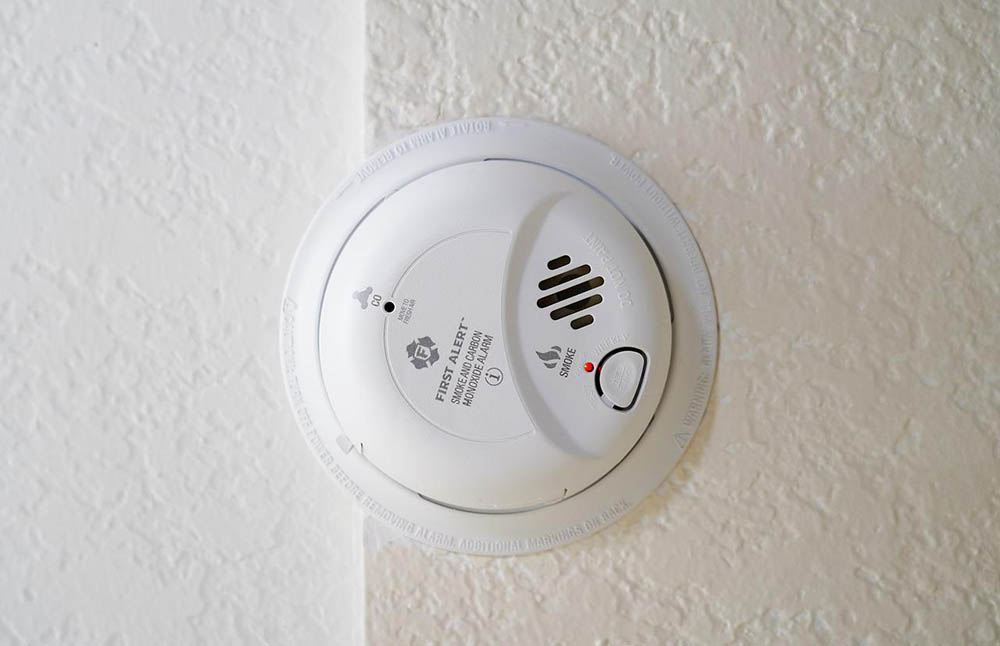
Parts of a Smoke Detector
A smoke detector has three primary components. They include:
The Sensor
The sensor is inside the unit. It detects smoke particles in the air, then sends an electrical current to the alarm.
The most common type of sensor uses photoelectric technology. It’s highly effective at detecting smoke and other potentially hazardous gasses.
The Control Unit
The control unit interprets data from the sensor, ensuring that it passes through all stages. It also provides power to the smoke detector. If there’s any issue with this component, it can lead to false alarms or no alarm at all! Conduct regular inspections to make sure that it functions well.
The Horn
The horn alerts you when there is smoke in your home or office building. There are different types of horns. Some have a lower pitch than others, but they all serve the same purpose: letting people know that there is a danger of a fire.
- Reduced fire damage
- Provides 24/7 protection
- Least expensive method of sending an early warning of a potential fire
- Not ideal for large buildings
Overview of Fire Alarm
A fire alarm is a system of devices for detecting a fire and alerting the occupants of the building or home. It is part of a building’s fire safety plan, and it is monitored by a control center or supervising station. It can be standalone or integrated with other building systems.
The system comprises several components, including smoke and heat detectors, alarm sounders, and manual call points. After detecting a fire, it communicates the information to the occupants by an alert (warning). It will detect flaming combustion—different from the short bursts of flames associated with fast-burning fires such as paper or trash.
Usually, it’s installed at a central location in the building. It activates automatically and can also be activated manually if there’s a fire. Fire alarms are installed in large buildings, such as schools, hotels, and hospitals. They notify occupants to evacuate the building through an exit.
Many fires are detected early by the local civilian fire detection systems, which include sprinkler systems, closed circuit television monitoring of smoke-sensitive areas, and heat sensors embedded in the structure of buildings. If there’s a fire emergency, these systems can activate alarm notification appliances.
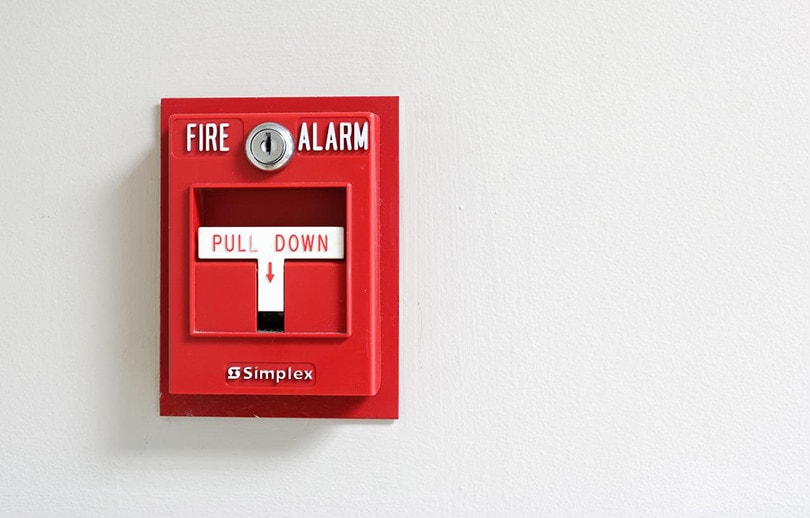
How Does a Fire Alarm Work?
Usually, a fire alarm system is the first method of defense against fire. It does not only announce a fire, but it works in several ways to maintain the building’s safety.
First, it detects fire in two primary methods: heat and smoke. After detecting a fire, the fire alarm system alerts you using both visible (light) and audio (sound) alarms. The two warning types ensure that every person in the building or house is vigilant.
The fire alarm system also reacts to the fire risk. Several systems in the fire alarm conduct some tasks to stop the smoke or fire from spreading to other parts of the building. These tasks include switching off air conditioning and ventilation or closing doors in rooms with no fire. This way, the fire won’t spread to those rooms.
Types of Fire Alarms
Understanding the different fire alarms will also educate you more on how they work. Fire alarms come in three primary types. They include:
Ionization Fire Alarms
These are the most common types of residential fire alarms. They use a small amount of radioactive material to detect fires. The radioactive material perches between two electronically charged plates. This way, it leads to a constant current of ionized air between the two plates.
If strong smoke gets between the ionized current, it interferes with the current, and the fire alarm goes off. Ionization fire alarms also detect flaming fires. They’re ideal for detecting quick flaming fires. You can install these alarms in the ceiling or the wall; they’re easy to use and maintain.
Photoelectric Fire Alarms
These fire alarms are better suited to detecting smoldering fires. The smoke emitted by smoldering fire isn’t similar to that of a raging flame fire. It means they can save lives by giving you extra time to escape the building before flames erupt.
Photoelectric fire alarms also use light to detect fires. They include a photocell usually located near the ceiling, which detects visible light. Then, it sends a signal to a control panel when it detects a change in brightness.
This type of alarm is not used in residential homes. It can be triggered by incandescent light bulbs. The sensors may also malfunction in cooking fires with steam or other forms of moisture due to their sensitivity to water vapor in the air.
Combination Fire Alarms
These fire alarms are designed to detect both smoke and heat. They use ionization or photoelectric sensors. They also have thermal detectors.
You can use these alarms in areas with high dust and debris levels as they can differentiate between smoke and dust particles. But they tend to have a high false alarm rate, which makes them less desirable in homes with pets or children.
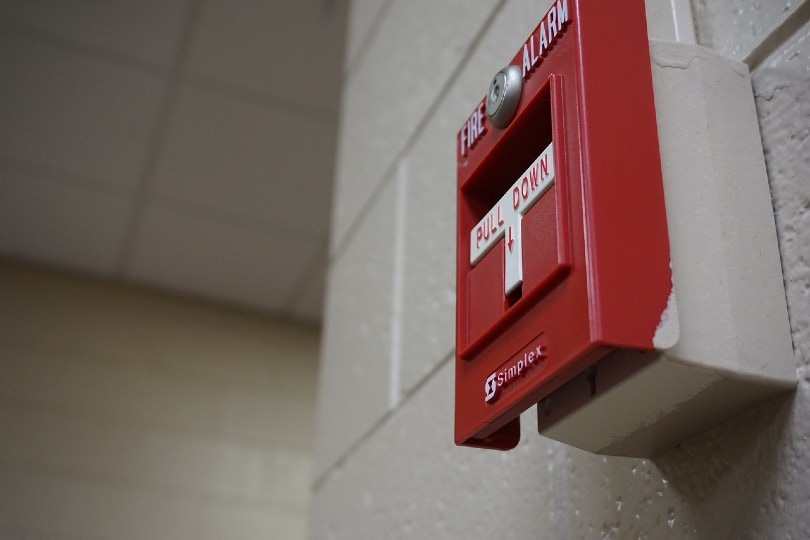
Parts of a Fire Alarm
There are many fire alarms today, but they all need several components to work well. If a fire alarm system lacks any primary part, it’ll not work as it should.
Here are several primary components your fire alarm system should have.
Fire Alarm Initiating Devices
The initiating device is the part of the system that detects a fire, smoke, or heat and activates the alarms. They can be either manual pull stations or automatic detectors.
Manual initiating devices may have a button that you can activate manually if you identify a fire in a building. They should be installed at an easily accessible location.
Automatic initiating devices activate automatically in case of a fire or smoke. They include flame, heat, and smoke detectors. These devices also send signals to the fire alarm control panel.
Fire Alarm Control Panel
The control panel is the central component of any fire alarm system. It sends the signals that trigger the other parts and alerts people of the fire danger. It can either be local or centralized depending on the size of a building and its layout.
Localized systems are used for smaller buildings. Centralized systems are often used in larger buildings such as hospitals and hotels.
Fire Notification Devices
These devices provide audible or visual warning messages to occupants in case of a fire. They can be bells, horns, or strobes.
Primary Power Supply
This is a battery or an AC transformer that converts the 120-volt AC household current to low DC voltage. The low voltage triggers the alarm and runs the control panel.
Backup Power Supply
Many fire alarms have backup batteries that ensure they continue working even if there is a power outage in your area. You will want to replace these batteries regularly as per manufacturer specifications to function well.
- Affordable
- Durable
- Provides your building with all-round protection from fire damage
- Requires professional installation and maintenance
What Are the Differences Between a Smoke Detector and a Fire Alarm?
If you’re looking for the best way to protect your home from fire, install either a smoke detector, fire alarm, or both. The two devices are similar, and both detect smoke and alert homeowners when it’s time to evacuate the building. They also have battery backup power in case of power outages.
However, there are several primary differences between them, as seen below:

How They Work
A smoke detector is a sensor. It only detects smoke. A fire alarm takes action by alerting you when there’s a fire in your home. It will sound an alarm so you can get out of your house safely and call for help. It also has extra features that help you respond to an emergency.
A smoke detector is incorporated into the fire alarm system. So, it’s a crucial component of the fire alarm.
Installation
The installation process is also a primary difference between a smoke detector and a fire alarm. You can install a smoke detector yourself, but you’ll need to hire an electrician to install a fire alarm. It’s because a fire alarm has several components, including the smoke detector. So, the installation process is challenging.
Lifespan
A fire alarm system has a longer lifespan than a smoke detector. The average lifespan of a smoke detector is between 8–10 years, after which you must replace it. On the flip side, the lifespan of a fire alarm system is around 10–15 years.
Maintenance of a Smoke Detector and a Fire Alarm
- Look for any damage or corrosion around the battery area that can indicate the smoke detector is leaking battery fluid. If you see any signs of damage, replace the smoke detector immediately.
- Replace any smoke detector 10 years old or older with a new one.
- Replace all batteries in each detector at least once a year. It should be more often if you live in an area with extreme weather conditions. Ensure you use the correct battery type. Most manufacturers recommend lithium batteries. They last longer than alkaline batteries but are also more expensive.
- Test smoke detectors monthly by pressing their test buttons. It’ll trigger a loud alarm if they work well and will be silent if they don’t work.
- Dust the smoke detector once a year. Use a soft cloth or a vacuum cleaner.
Perform these maintenance practices as per the manufacturer’s directives.
A fire alarm should be maintained by a professional with the knowledge of how they work. But there are several maintenance practices that you can perform yourself.
- Inspect the sound levels and condition of your fire alarm system.
- Check your backup battery and ensure it is connected well. This way, everyone will be alerted of a fire emergency in case the main power supply fails.
- As you inspect your fire alarm, note down the components that need professional maintenance and contact a trained technician as soon as possible.
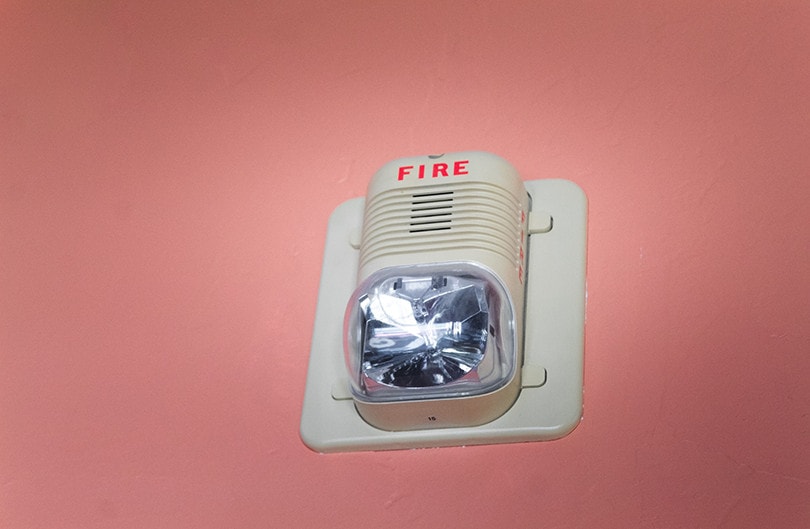
Smoke Detectors vs. Fire Alarms: Which One Is Suitable for You?
A smoke detector is ideal if you have a small residential apartment. Install smoke detectors in the living room, every bedroom, and the kitchen. Besides, a smoke detector needs minimal maintenance compared to a fire alarm system.
Is your smoke detector directly connected to the main power supply? If not, it uses batteries. The only maintenance needed is changing the batteries regularly.
A smoke detector isn’t sufficient if you have a large building. A powerful fire alarm system would be what you need to warn every person if there’s a fire.
Conclusion
Now you know the differences between smoke detectors and fire alarms. While they protect your home in different ways, they serve the same purpose: protecting your life and property.
You may even feel your home is safer knowing you have at least one of them installed, but you must learn how to operate one or both effectively. You may also need both safety devices for your home because one may not be enough to protect you from all the potential threats you might face.
The best thing to do is to get yourself a combination of smoke detectors and fire alarms placed in strategic areas of your property.
- What is a Smoke Detector?
- What is a Fire Alarm?
- How Does a Smoke Detector Work?
- Types of a Smoke Detector
- Parts of a Smoke Detector
- Advantages and Disadvantages of a Smoke Detector
- How Does a Fire Alarm Work?
- Types of Fire Alarms
- Parts of a Fire Alarm
- What are the Differences between a Smoke Detector and a Fire Alarm?
- How to Maintain a Smoke Detector
- How to Maintain a Fire Alarm
- NIST GOV
- NATIONAL FIRE PROTECTION ASSOCIATION
Featured Image Credit: (Left) nikkytok, Shutterstock | (Right) CHARTGRAPHIC, Shutterstock
Contents


